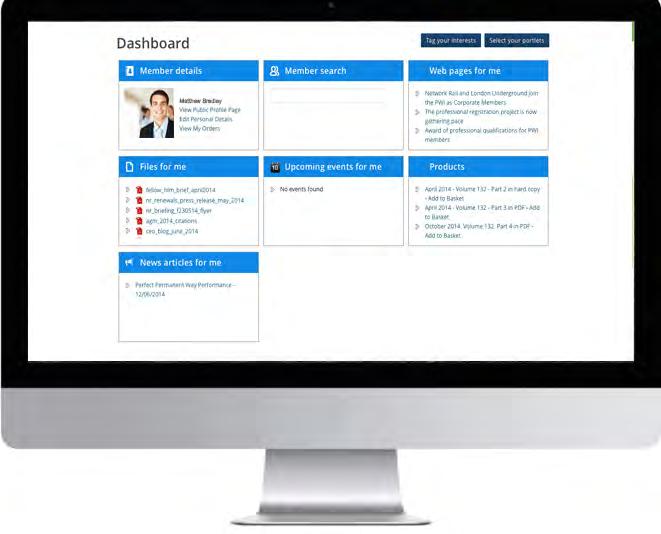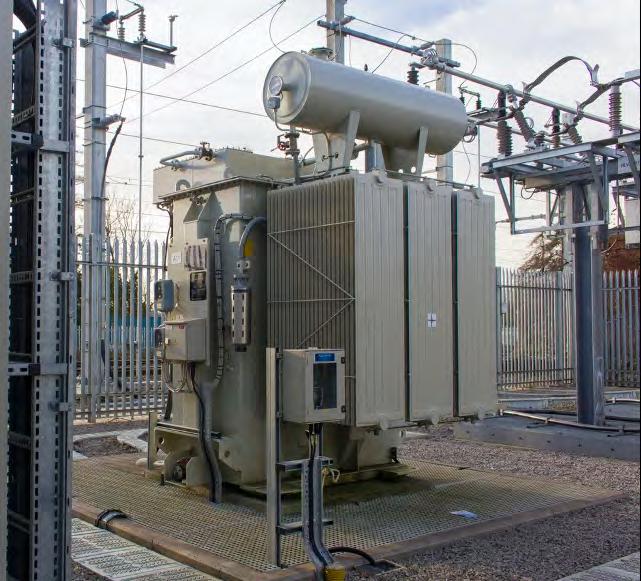
4 minute read
Professional registration
by The PWI
Professional Registration is an important step in pursuing a career in engineering and it lends itself to a ready-made career path, progressing through the grades as your experience broadens and deepens.
Putting those letters after your name (EngTech, IEng or CEng) instantly tells employers, clients and wider society that your competence and understanding of engineering principles has been independently assessed, that you have the knowledge, skills and professional attitude they value, and that you are committed to developing and enhancing your competence. It sets you apart from your non-registered colleagues.
Advertisement
The right professional registration title for you is based on your academic and professional competence: here’s a general guide…


Engineering Technicians apply proven techniques and procedures to the solution of practical engineering problems.
They hold Level 3 engineering/technology qualifications AND 2-3 years industry experience, OR 3-5 years industry experience.
Incorporated Engineers maintain and manage applications of current and developing technology, and may undertake engineering design, development, manufacture, construction and operation.
They hold Level 6 (Bachelors) engineering/technology qualifications AND 3-5 years industry experience, OR 5-10 years industry experience. Chartered Engineers develop solutions to complex engineering problems using new or existing technologies, and through innovation, creativity and technical analysis.
They hold Level 7 (Masters) engineering/technology qualifications AND 3-6 years industry experience, OR 10-15 years industry experience.
I currently work as an Inspector of Railways – Track Engineer at the ORR and a key part of my role is to lead our technical liaison with industry to secure and maintain safe management of the track asset. As a result I liaise with track personnel of all levels across the rail industry, from the heritage sector to the Channel Tunnel. I applied for joint Chartered status with the PWI to demonstrate professional recognition of my experience working on the track asset, with a hope this will aid in conversations required in my role going forwards.
The application was a clear and simple process. The application form required demonstration of relevant permanent way experience, and demonstration of a commitment to continuous improvement of staff and system safety. Clear guidance is provided on possible examples that could be used to meet this requirement. Following submission of your application you will hear back within six weeks, and the Reviewers can either recommend that you be elected as a Chartered Engineer with the PWI, or they may want some further information from you first, or they may invite you to a Professional Review Interview.

The PWI is held with very high regard in the industry and having professional recognition from the Institution provides an immediate demonstration of my experience in rail infrastructure, which I hope will benefit my liaison across the industry going forward.
Gregory Strong CEng MIMechE MPWI Inspector of Railways –Track Engineer ORR (Office of Rail and Road)
CPD AUDIT 2020 – WHAT WAS DISCOVERED?
Take forward the shared learnings, so you can model good practice when you Plan, Do and Reflect on your development. I am pleased to tell you that we now have over 200 registered engineers, with another 350 in the wings including 20 candidates approved for the Experiential Learning route to Chartership.
Last September’s virtual PWI Professional Review interviews were a great success and involved 14 PWI Reviewers undertaking Chartered and Incorporated professional reviews, and technical report interviews. There was a good pass rate which is a great tribute to our mentors and sponsors. As Technical Director, I undertook two audits of these events.
Following attendance by Dr Matthew Frost (Academic Panel Chair) and myself at an Engineering Council workshop on Individual Routes, we are looking at enhancing the PWI routes going forward to assist people with HNC and substantial experience to move towards IEng with experiential learning or an appropriate technical report route. I am also working in conjunction with Network Rail to blend their Track Maintenance Engineers courses with the academic competence requirements for IEng.
Our Professional Registration Development Officers are working well to promote industry links through more workshops offered to Corporate Members. Finally, we have completed our second round of annual CPD audits following the requirement to check members are up to date.
And remember, reading this Journal classifies as CPD activity!
Brian Counter
TECHNICAL DIRECTOR Permanent Way Institution technicaldirector@thepwi.org
The PWI is here for your journey and would love to support you in your career aspirations.
www.thepwi.org profeng@thepwi.org
Professional registration is open to any competent practising engineer or technician.
Different levels and pathways to registration are available, depending on your experience, training and qualifications.
FIND YOUR ROUTE TO REGISTRATION ON THE WEBSITE
WWW.THEPWI.ORG
PROFESSIONAL REGISTRATION WITH THE PWI IS SUPPORTED BY NETWORK RAIL AND TRANSPORT FOR LONDON









